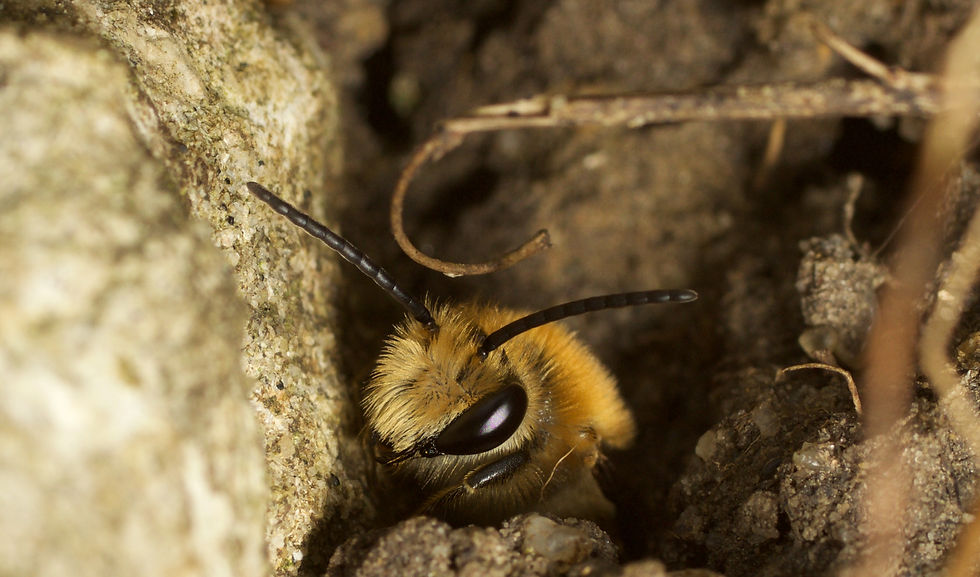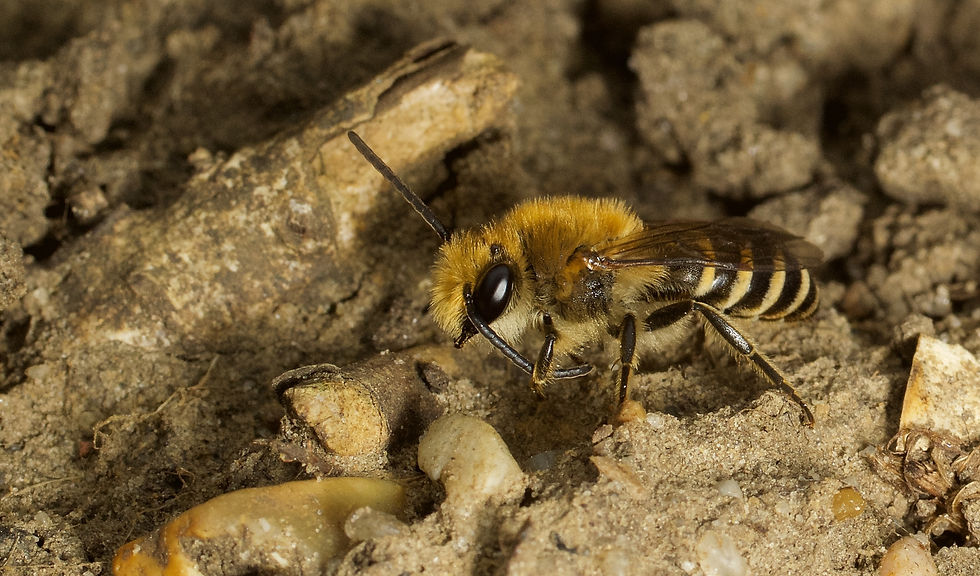WHO IS HIDING IN THE IVY?
- Lucia
- Jan 12, 2019
- 2 min read
Updated: Dec 9, 2020
I think they must be Ivy bees!
For those who didn't know, there are amazing 277 species of bees in the UK. Ivy bees (Colletes hederae) are a recent addition to the list, described as a new species in 1993 and first seen in the UK in 2001. Like majority of our bees, Ivy bees are what we call solitary bees - they don't live in a colony made up of a queen, workers and drones but go about their business on their own. They nest underground and prefer loose soil and south-facing slopes for the warmth. If the conditions are just right, there can be hundreds of nests in the same area and the buzzing can be pretty loud! I found my congregation right in front of my house by a dried-out pond, very exciting.


Unusually for bees, Ivy bees start coming out in early September which makes them the last solitary bee species to emerge each year! Males emerge first and start patrolling the area for females, often inspecting old nest entrances and grooming in front of them. Females emerge a week or so later and are immediately pounced upon by multiple eager males forming a so-called 'mating ball' or a 'copulation cluster' (see here). Unfortunately I missed the emergence of females this time but will try to get a picture of this strangely sounding cluster next year.

After mating, females start digging burrows that end in a cluster of cells where they lay their eggs. They then go on long food-collecting trips to provision each of their eggs. Once there is enough food placed in for all eggs, female seals the entrance of the nest and dies, never meeting her babies. The eggs hatch, feed on the lovingly prepared food, spin a cocoon and overwinter in their underground cells. The following September, they emerge from their cocoons as fully developed adults and the cycle starts again. And why ivy bees? Both males and females depend on ivy flowers and their feeding is almost always restricted to these plants.


Comments